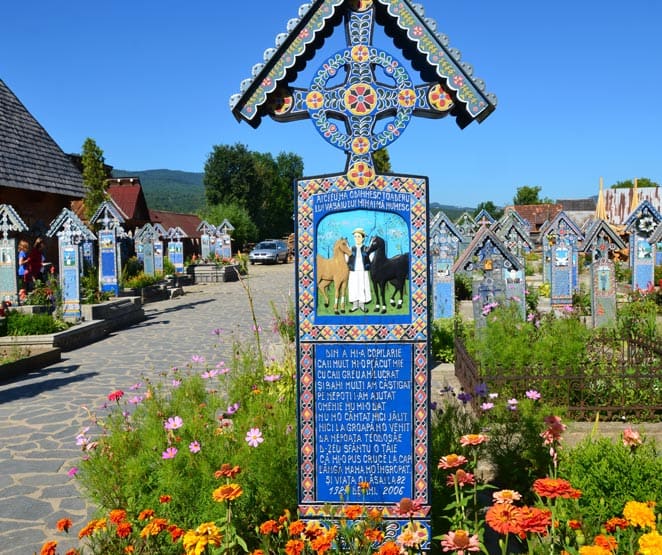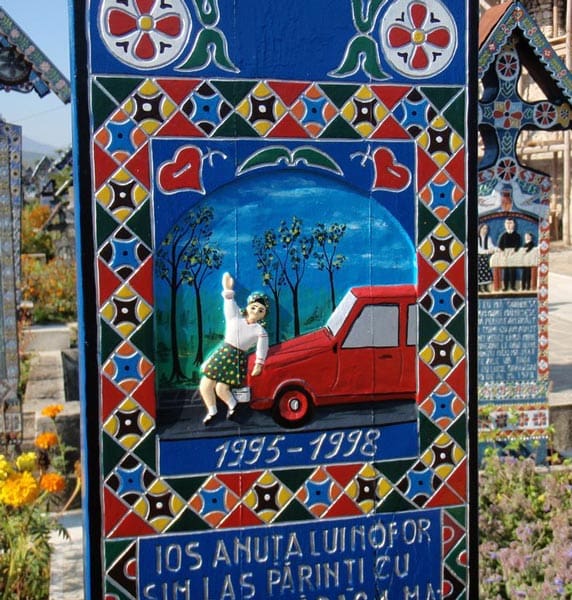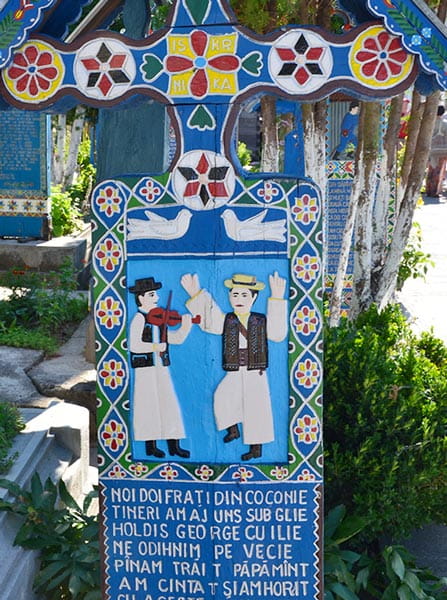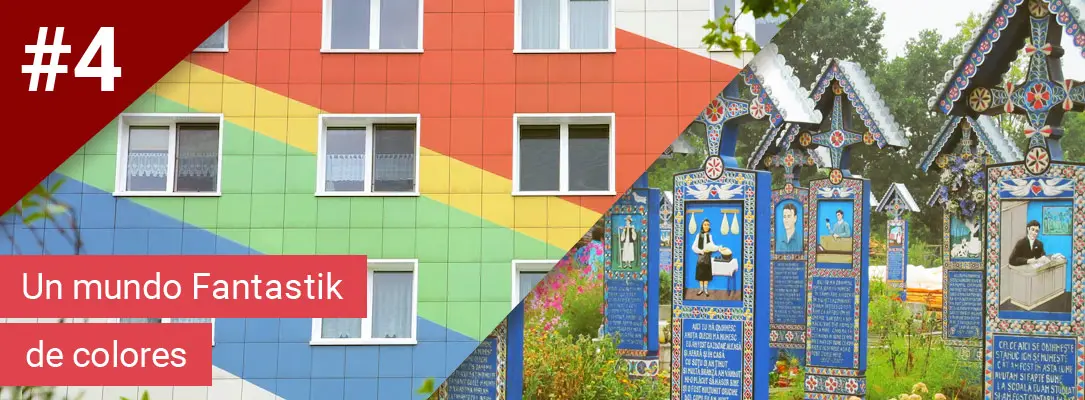This is the fourth post of the series “A Fantastik world of colors”. The objective is to compile corners of the world that represent very well our shop’s philosophy. Very original and authentic places, and of course with lots of colors everywhere. Here’s a link to see them all together on Instagram.
The merry cemetery in Romania

We had a very “eureka!” moment when we discovered this place for the first time. It is indeed a truly unique place in the world. It may seem contradictory, but its name is justified: a merry cemetery, located in the village of Săpânţa, northern Romania, very close to the Ukrainian border.
Here death is treated very differently from how European societies perceive it, i.e. as something sad and solemn. The cross-shaped tombstones painted in naïf style evoke lightness, joy and, why not, a bit of humor…
The project was initiated by Stan Ioan Pătraş, a young sculptor who began carving small epitaphs written in first person on wooden graves. His goal was to capture a village funeral tradition, where friends and relatives would gather to recall amusing anecdotes of the person being veiled. Over time he added images as well, and his style became increasingly popular and in demand. After Pătraş’s death in 1977, the tradition was picked up by his disciple, Dumitru Pop, who went on to live in his master’s house. He later turned it into a workshop and museum, and today the entire compound, with more than 800 tombs, attracts many curious tourists.



All the crosses are painted with reds, greens, yellows and whites. A blue known as “Sapanta Blue” is used for the background. Each tombstone has a text and an illustration about the person who lies there, how they lived or how they died. Among the most curious, the one of the girl run over by a car, the one of the fight with the mother-in-law and the one of the drunkard whose text reads “I died because death forced me”. It is said that this curious cemetery honors an ancient philosophy of the Dacian culture, in which death was a moment of joy and hope for a better life.

Xochimilco: a little bit of Venice in Mexico
It is a pleasure to include in this list a place where we have been several times and where we always try to go when we visit Mexico. Xochimilco is a humble region south of Mexico City, and there you can find the famous canals with the same name. They are the remains of a huge water transportation system built by the Aztecs.
The area is particularly important for the existence of the chinampas, which are floating rafts covered with earth used for agriculture. They served to grow flowers, vegetables and fruits, thus expanding the land above lakes and lagoons in the Valley of Mexico. It is a Mesoamerican agricultural technique developed and shared by several peoples. In 1987 Unesco proclaimed the chinampas of Xochimilco as a cultural heritage of humanity.

In the canals you can rent boats called trajineras, with capacity for 10 to 15 people. The atmosphere is festive, especially on weekends, when the local population and the many tourists who visit Xochimilco take a stroll with the boats. Meanwhile, various smaller boats pass by with food vendors, flower sellers, artisans and mariachis offering their music. We ourselves have already had a few parties there…
The trajineras are painted in flashy colors, with a kitschy front arch, and are named after women. But if you think they are all named Lupita, Maria or Carmen, you are very wrong. Since Mexicans are very inventive, and because they want to compete attracting the attention of tourists, in recent years we have seen such outlandish names as “La Güera“, “Mi Bebito Fiu Fiu” or as the legendary anchorwoman Laura Bozzo used to say, “Que Pase el Desgraciadoooooo“…
Berlin’s rainbow neighbors
The last place on this list is actually one of the first posts we made on Instagram about curious places, even before the pandemic. It’s about the Lichtenberg neighborhood in the western part of Berlin.
In this part of the city you can still appreciate what was the urban development in the communist era, for example, the Plattenbau. Prefabricated building blocks with their gray facades and simple lines, designed with a communist concern for puritanical living. These buildings used concrete panels that were installed quickly and at little expense. This reduced the cost and time of construction, while increasing the number of housing units in the cities after the Second World War.

After the fall of the Berlin Wall, the neighborhood underwent a rapid transformation. The arrival of immigrants from all over the world, social coexistence and gentrification have resulted in an area that is not exempt from controversy. However what cannot be denied is that visually it has improved a lot with the urban art interventions that have been created over the years, such as the works of the artists JBAK and Zebu, among others. One of the first murals to be painted was on the corner of Möllendorffstraße and Herzbergstraße. Joining the two white buildings, a large rainbow fills this corner of the city with lots of color.





